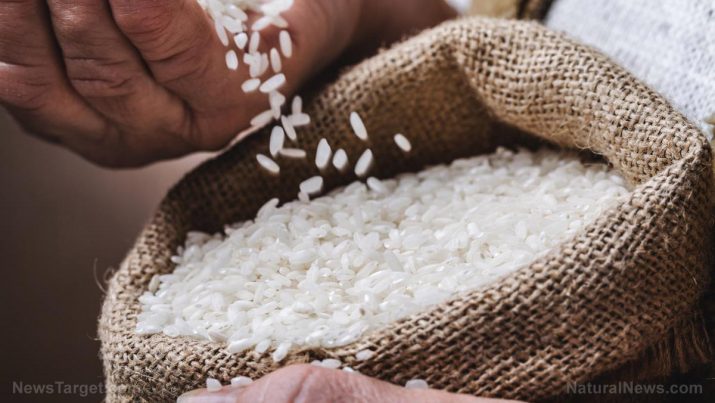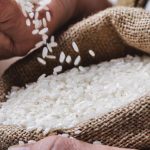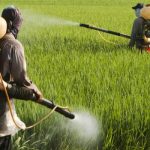
Rice crisis incoming: Soaring fertilizer prices threaten rice production in Asia
Wednesday, July 13, 2022 by Arsenio Toledo
http://www.products.news/2022-07-13-rice-crisis-fertilizer-prices-threaten-production-asia.html

The rising price of fertilizer is threatening rice production in many parts of Asia at a time when demand for rice is increasing.
Rice harvests in Asia have been generally plentiful for the past four years, keeping prices affordable. But with natural gas prices trading at historic highs in the wake of the conflict between Russia and Ukraine, this has put fertilizer prices soaring, affecting the ability of farmers to produce enough. Both the World Bank and the United Nations Food and Agriculture Organization are forecasting that prices will go up as production stalls due to the unaffordability of fertilizer. (Related: Rice production could plunge by 10% due to rising fertilizer prices, threatening half a billion people.)
“It’s now inevitable. Prices will go up,” said John Baffes, senior agriculture economist for the World Bank’s Development Economics Prospects Group. “Rice was the exception [to rising prices], but not anymore.”
Natural gas is the primary feedstock used by almost all major fertilizer producers with the exception of China, which still uses coal. Natural gas is used to manufacture ammonia that about 80 percent of fertilizers in the world are made from.
Russia, Belarus and Ukraine – the three main nations currently embroiled in conflict – were major exporters of nitrogen-based fertilizers before the war. But now that the war has diverted their attention, fertilizer prices are rising to levels not seen since 2008.
“This is a huge worry for the global market, Asia in particular,” said Julia Meehan, managing editor for fertilizers with the Independent Commodity Intelligence Services, a London-based market analysis firm. “The high cost of gas has created demand destruction – so we are seeing curtailments in production, in addition to some producers choosing to halt production altogether.”
Last year, India imported about 15 percent of the ammonia it used to make nitrogen-based fertilizers from Russia. Indonesia imported more than 15 percent of its ammonia from Russia, while Malaysia, Thailand and Vietnam imported about 10 percent each.
“A lack of fertilizer means damaged crops or not a good yield,” Meehan added. This is a big problem for Asian nations that previously heavily relied on Russian fertilizer imports and where “farmers are very poor … compared to other parts of the world.”
Asia could face a “rice crisis” in the near future
If fertilizer prices don’t drop anytime soon, crop yields all over Asia are expected to decline drastically. Last month, Indonesian President Joko Widodo sounded the alarm, claiming that the looming rice crisis could affect two billion people worldwide who rely on the staple crop.
“We must act fast to find a concrete solution. Food production must be ramped up. The global food and fertilizer supply chain needs to return to normal,” said Indonesian Foreign Minister Retno Marsudi.
In Thailand, economic research company Kasikorn Research Center noted that record-high fertilizer prices could mean less fertilizer is used on the crops. Less fertilizer means fewer crop nutrients, which will lead to smaller harvests.
In the Philippines, the world’s second-largest importer of rice, the harvest this year is expected to drop significantly due to fertilizer prices. The government is also concerned about soaring food inflation, which has affected the cost of rice, especially for lower-income households who spend around 16 percent of their budget on staple food.
The scale of the crisis will depend on India, whose harvest currently depends on a good monsoon.
India is responsible for about 40 percent of all rice exported annually. It has insulated itself from most of the worst effects of the food production crisis due to protectionist policies at the expense of many countries that rely on Indian food imports.
“Global supply is at risk, but for now we still have massive Indian availability that is reining in prices,” said V. Subramanian, vice president at The Rice Trader, a publication and agriculture research company.
For now, India’s rice exports are helping ease any tightening of supplies in Asia – but for how long remains to be seen.
Read more stories like this at WorldAgriculture.news.
Watch this clip from “Cross Roads” from Epoch TV as host Josh Philipp explains the agenda against farmers and fertilizers that created the global food crisis.
This video is from the Galactic Storm channel on Brighteon.com.
More related stories:
Fertilizer price hikes prompt soaring food prices and global shortages.
Global food and fertilizer supply crisis gives Russia significant leverage.
Fertilizer costs driving up food prices, threatening food security worldwide.
Global rice production to plunge by 10%, hundreds of millions to be affected.
Sources include:
Tagged Under: Tags: agriculture, Asia, crops, fertilizer prices, food collapse, food production, food supply, harvest, hunger, India, inflation, philippines, products, rationing, rice, rice production, scarcity, starvation, supply chain, Thailand
RECENT ARTICLES


Rice crisis incoming: Soaring fertilizer prices threaten rice production in Asia

Farmed salmon as toxic as junk food and may cause diabetes and obesity, researchers claim
By Zoey Sky

Food collapse: Bread will be emptied from shelves within days, warn Sri Lankan bakery owners
By Belle Carter

CDC: 80% of urine samples found to contain cancer-causing glyphosate weed killer
By Ethan Huff
COPYRIGHT © 2017 PRODUCTS NEWS


